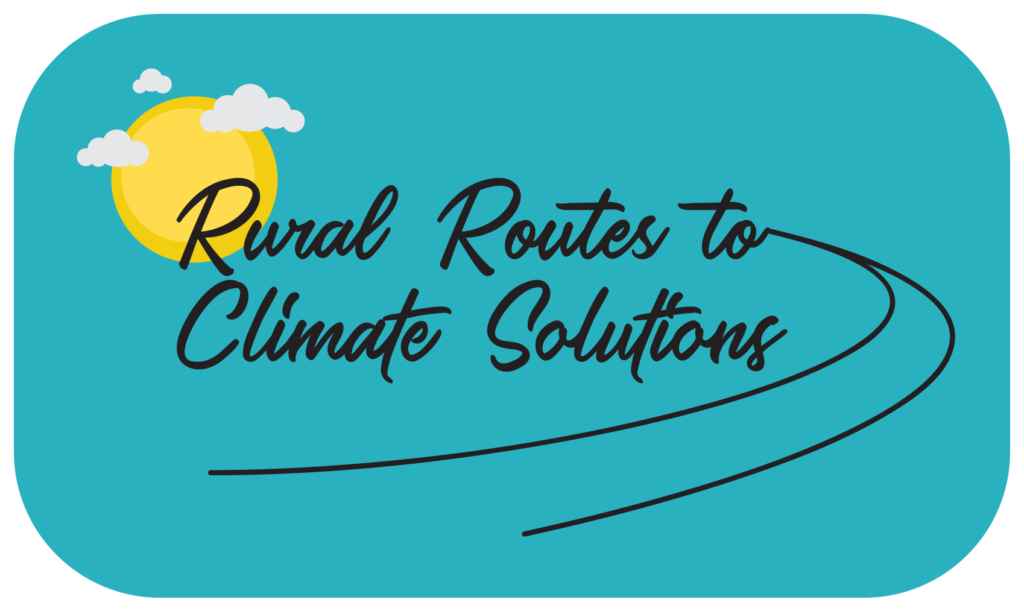Polycultures: Harnessing Grazing Power August 10th, 2023
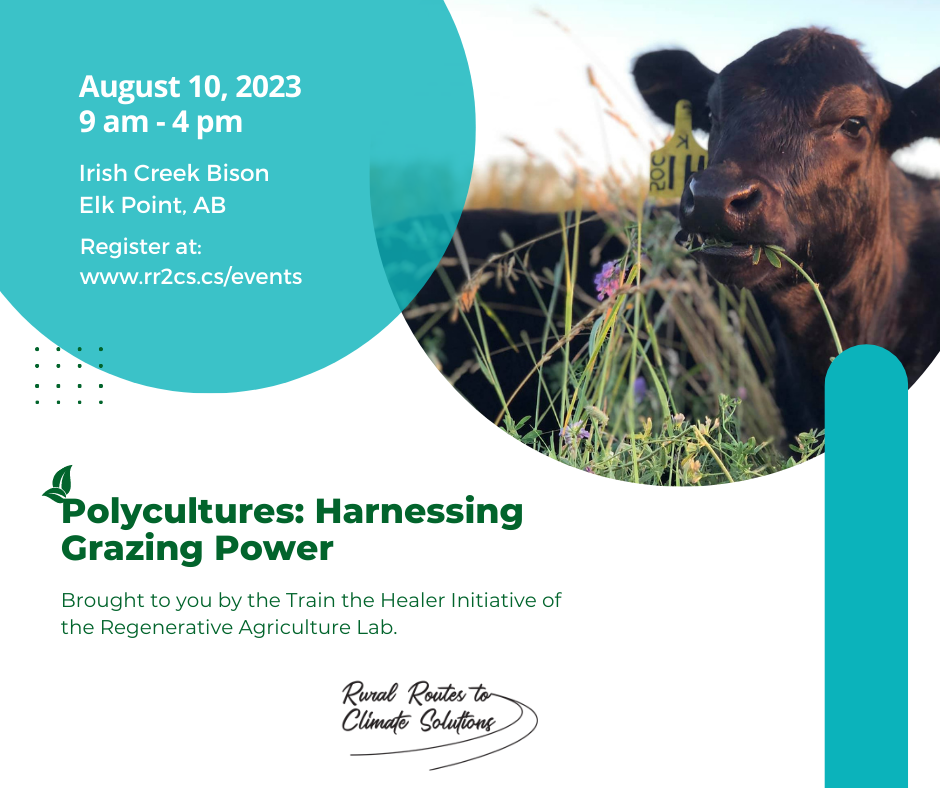
Join Rural Routes to Climate Solutions and the Train the Healer Initiative of the Regenerative Agriculture Lab in a hands-on polyculture learning opportunity.
Polycultures December 7th, 2022
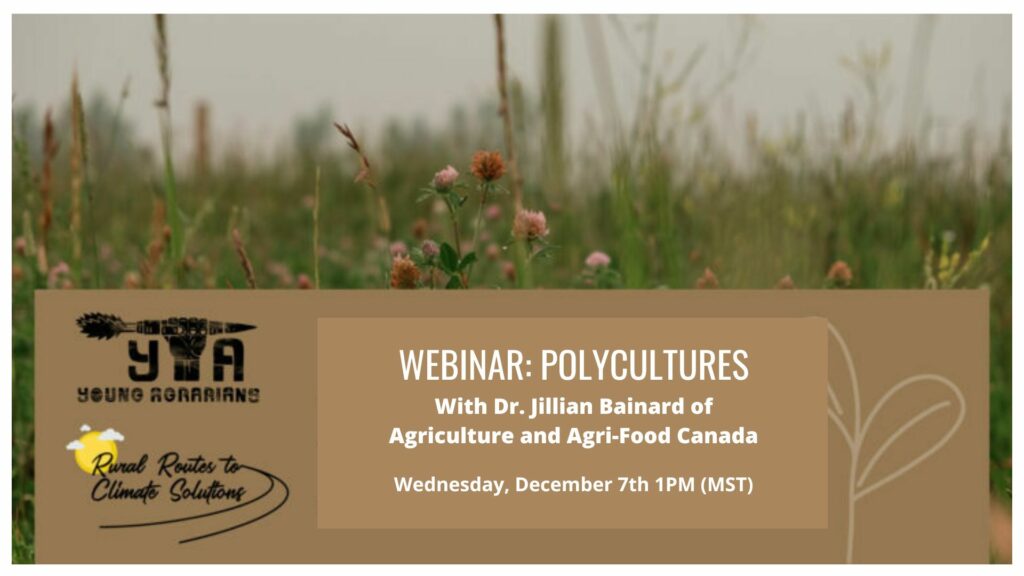
Join Young Agrarians, Rural Routes to Climate Solutions, and Dr. Jillian Bainard of Agriculture and Agri-Food Canada to learn everything you need to know right now about polycultures.
Farming as though the Earth Matters – Brenlea Farms – Camrose, AB
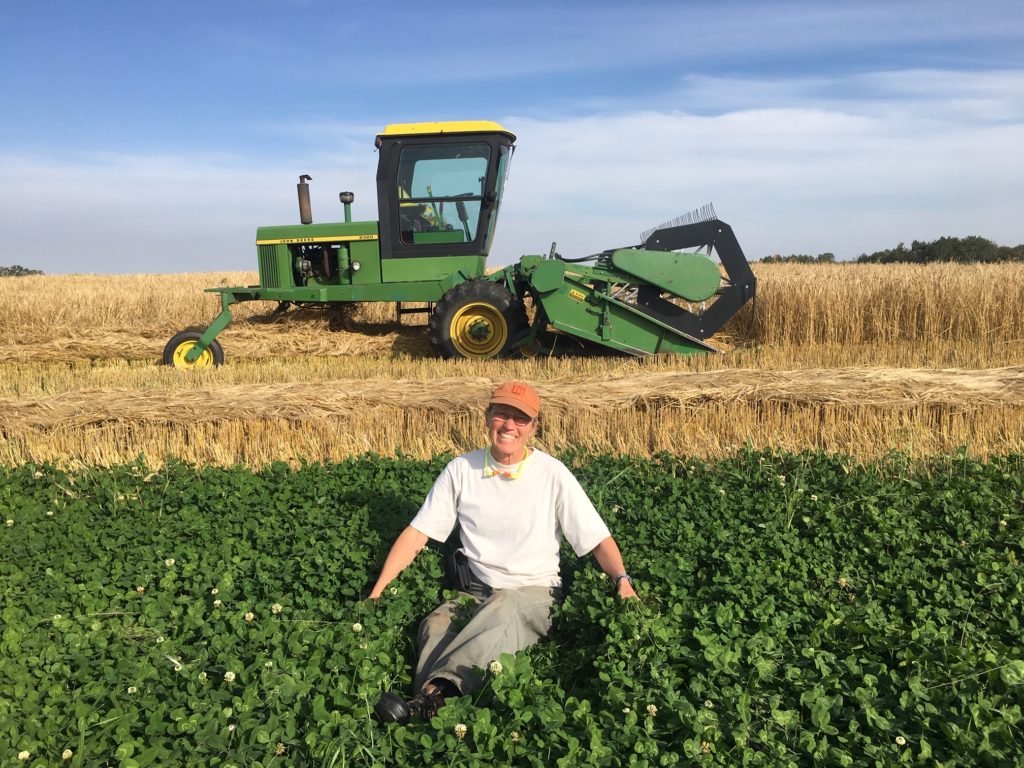
Brenda Bohmer, a grain farmer at Brenlea Farm in central Alberta, realized she’d been draining sloughs for years in an attempt to farm more acres. She would seed around duck nests, but in order to deal with weeds, she’d farm right up to the edges of the wetland. “It’s a mindset you get locked into,” she admits. Bohmer’s goal? Create a year-round wetland and invite nature to help rehabilitate the natural wetland ecosystem and water cycle.
Several years ago, Bohmer partnered with Cows and Fish – Alberta Riparian Habitat Management Society. Within a year, nature took over the wetland and Bohmer was amazed to see the transformation of the riparian habitat. “I can still grow crops between the wetlands,” explains Bohmer. “But now I have a buffer which provides a separation between farming operations and the natural habitat. Bohmer points out that 80 percent of all types of wildlife in Alberta spend all, or part of their lives in a riparian area. “We can co-exist,” she says. “I like to think of this as farming as though the earth really matters.”
Podcast Trailer
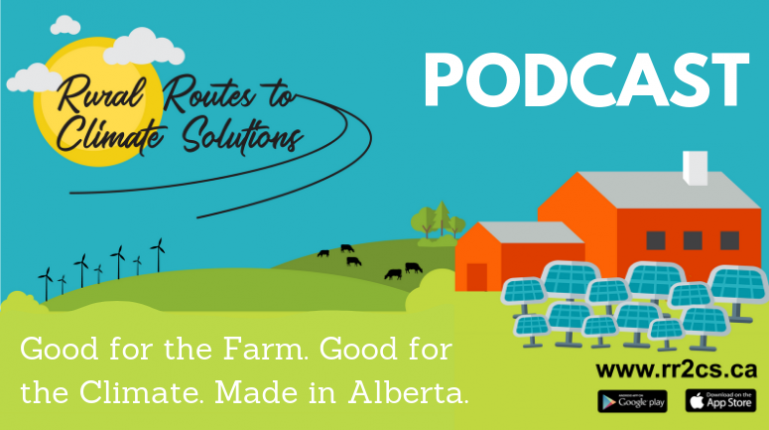
Podcast: Play in new window | Download
Subscribe: RSS
Hear about the farmers, ranchers, scientists, industry experts and people in Alberta who are leading the way in good land stewardship and reducing agriculture’s carbon footprint.
EP 80 – Meet the Prairie Precision Sustainability Network
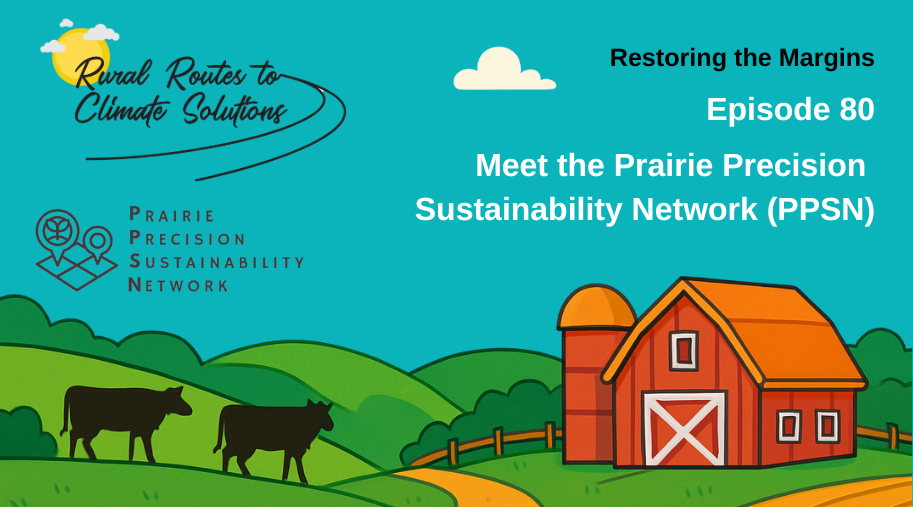
Podcast: Play in new window | Download
Subscribe: RSS
Welcome to Restoring the Margins, our brand new podcast series, in partnership with the Prairie Precision Sustainability Network (PPSN). This series explores how agriculture producers in the Prairies can take their marginal lands and turn them into something both more profitable and more beneficial for the environment. In this opening episode, we’re joined by Dr. Christy Morrissey, a professor at the University of Saskatchewan and a lead researcher with the PPSN.
EP 79 – Kainai Self Sufficiency
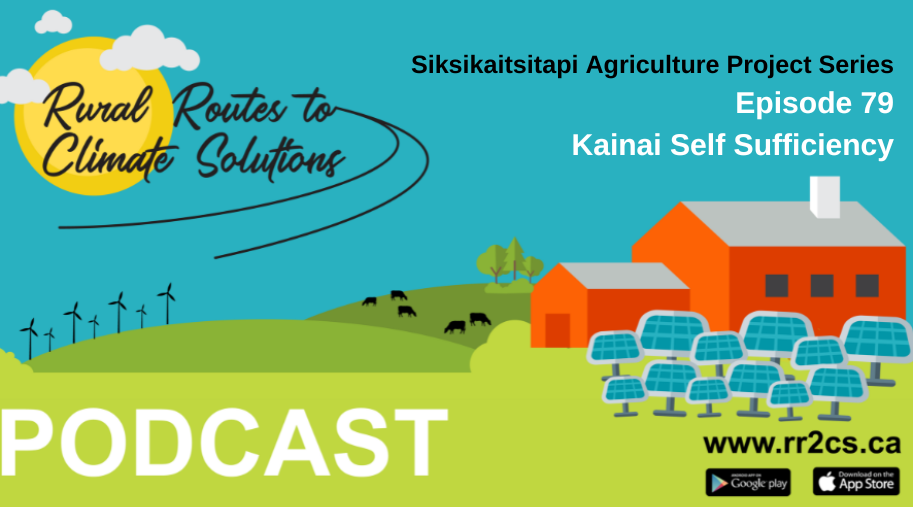
Podcast: Play in new window | Download
Subscribe: RSS
In this episode of the Siksikaitsitapi Agriculture Project (SAP) podcast series, Lance Tailfeathers sits down with Wolf Caller (Elliot Fox), a leader in land management and now a member of Kainai First Nation’s Council. They discuss the past, present and future of agriculture in Kainai First Nation in southern Alberta, exploring how Blackfoot ways of knowing can help to protect water systems against droughts, enhance food security and protect native species.
Strengthening Alberta’s Agriculture: Regenerative Agriculture Lab Open House
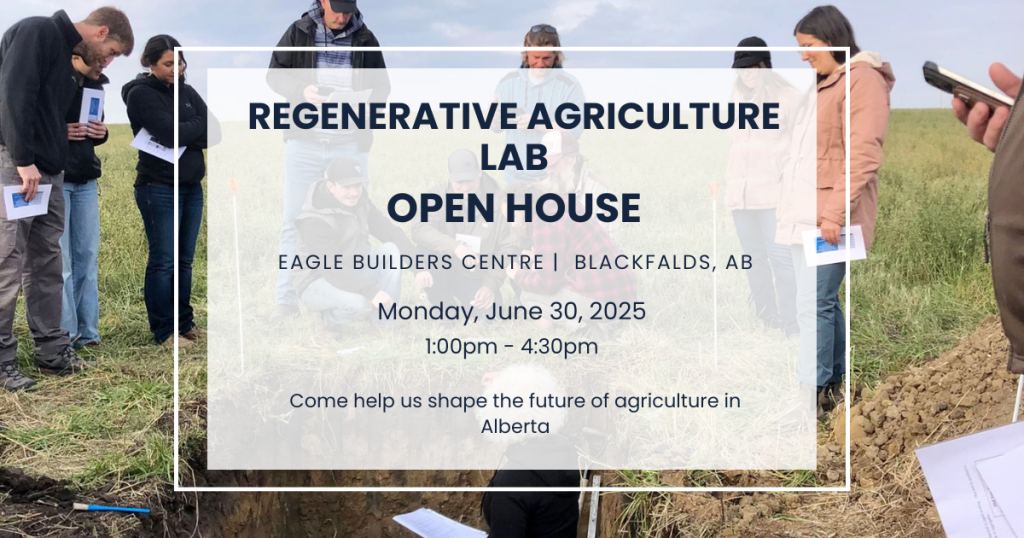
Join us for the public launch of the Regenerative Agriculture Lab (RAL)—a pioneering social innovation lab designed to transform Alberta’s agricultural landscape through sustainable, community-driven innovation.
Learn about the hands-on projects already underway, connect with the people behind them and share your ideas for Alberta’s regenerative future.
Stewarding the Land, Building the Future: The Story of Timber Ridge Ranch
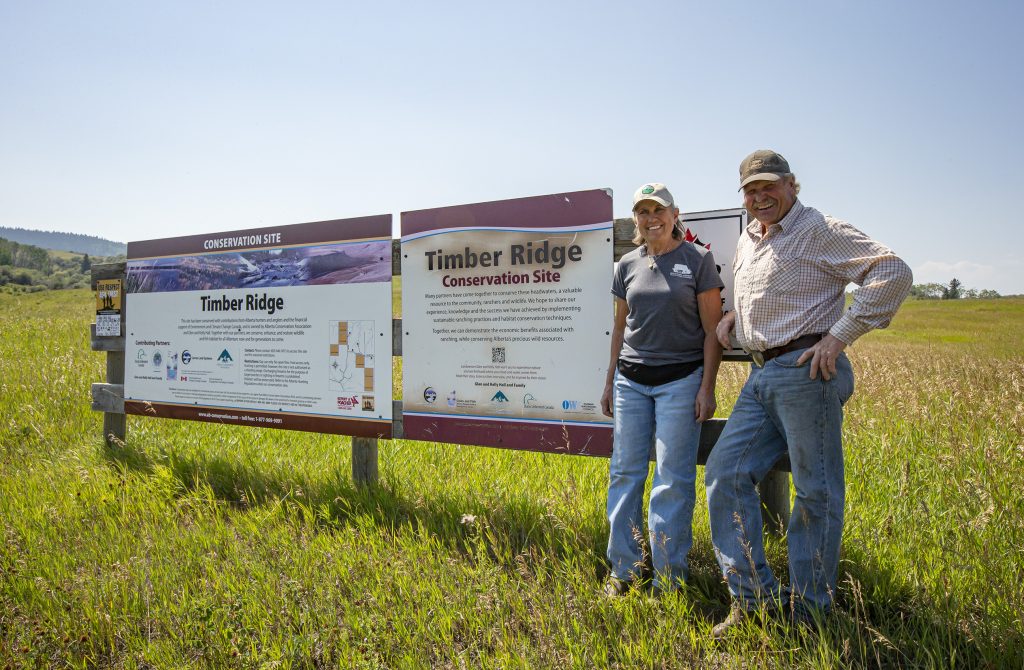
Since well before regenerative agriculture became a buzzword, Glen and Kelly Hall have been quietly practicing its principles. At Timber Ridge ranch, near Stavely, Alberta the Halls are blending time-honoured traditions of ranching with forward thinking practices that put soil, water and biodiversity at the centre of the story.
Ranching in today’s agricultural climate come with its challenges – rising costs, extreme weather and difficulties with expansion and succession to name a few. That’s why the Halls, in partnership with conservation organizations and impact investors have embraced a bold alternative – steward ownership.
We spoke to the Halls about this innovate model, which flips conventional farm financing on its head. We discussed putting the stewards (producers) at the centre, how they set up collaborative agreements and how this is helping them plan for a successful future at Timber Ridge.
It’s clear from this conversation that connections underpin the whole system – connection to the land, the animals and their community. Glen and Kelly are living proof that when innovative thinking meets a deep rooted care for the land, anything is possible.
Request for Proposal
Rural Routes to Climate Solutions (RR2CS) is seeking proposals from qualified consultants to support their Assessing Regenerative Natural Capital Opportunities (ARNCO) project. ARNCO is a one-year initiative designed to assess the feasibility and scalability of a Steward Ownership (SO) model—an innovative governance and financing structure—to expand regenerative agricultural land management in Alberta.
Project Coordinator – Regenerative Agriculture Lab
RR2CS is happy to announce that we are seeking a Regenerative Agriculture Lab (RAL) Coordinator to join our great team of individuals who are working together to support our Regenerative Agriculture Lab (RAL).
Talking Circle: Niitsitapi Kaakiisin & Agriculture
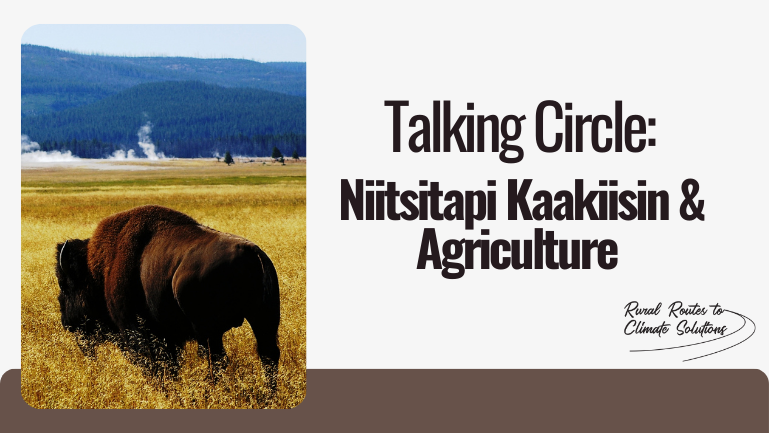
Join us for a special Talking Circle event as we gather to explore the intersection of Nitsitapi paatapiisini (Blackfoot ways of knowing) and agriculture. This day-long event is an opportunity to listen, share, and discuss how traditional knowledge and sustainable practices can work together to support resilient agriculture and land management within the Blackfoot Confederacy.
A Day in the Field – Crops, Cows & Carbon

Are you ready to enhance your farming practices with innovative solutions for feed and soil health? Join us on July 5th in Coalhurst, Alberta, for an engaging and informative field day filled with guest speakers, practical advice and plenty of networking opportunities.
Communications Coordinator
Are you a delight to speak with, thoughtful, flexible, and passionate about either Mokaksin (traditional Blackfoot knowledge), agriculture, community health and food security (or maybe it is all of the above)? Are you passionate about empowering Siksikaitsipoyi (Blackfoot people)? Do you believe in people and their ability to bring about positive change?
Project Coordinator – Siksikaitsitapi Agriculture Project
Are you a delight to speak with, thoughtful, flexible, and passionate about either Mokaksin (traditional Blackfoot knowledge), agriculture, community health and food security (or maybe it is all of the above)? Are you passionate about empowering Siksikaitsipoyi (Blackfoot people)? Do you believe in people and their ability to bring about positive change?
